Imagine standing in a cramped rehearsal space, your guitar slung over your shoulder, as the first ethereal notes swirl around you like magic. It’s not just the melody that’s captivating; it’s the transformation, a result of the reverb delay combo pedal beneath your foot. As a veteran in the world of guitar journalism, I’ve witnessed this metamorphosis countless times, where a simple strum evolves into a cathedral-like soundscape, with echoes that seem to extend into infinity.
This article dives into the most outstanding guitar effects pedals—specifically reverb delay combos—that promise to elevate any musician’s sound. Through my years of observing and analyzing gear in every nook and cranny of the music world, I’ve identified pedals that not only maintain fidelity but also augment your creative expression. Each selection is curated to meet diverse needs, whether you’re crafting surreal soundscapes or seeking straightforward, rich tones.
Join me as I explore the best reverb delay guitar pedals available, unveiling how they adapt to various styles and enhance your musical journey. We’ll delve into top-rated options like the Strymon Flint, whose lush textures have garnished many a hit, or the versatile Electro-Harmonix Holy Grail, renowned for its sonic dexterity. Whether you’re after the iconic ambiance of the Boss RV-6 or the innovation-packed Line 6 DL4 MkII, there’s something here for every artistic spirit.
Let’s unravel what makes each pedal stand out and how to match them to your unique soundscaping desires. These tools don’t just add effect; they empower new dimensions of creativity. Ready to explore and find the right pedal for you? Your sonic odyssey begins here.
Top-Rated Products
| Product | Type | Reverb Modes | Delay Modes | Bypass Type | Power Requirements | Price Range |
|---|---|---|---|---|---|---|
| Strymon Flint | Pedal | 3 (Spring, Plate, Hall) | None | True Bypass | 9V DC, 250mA | High |
| Electro-Harmonix Holy Grail | Pedal | 4 (Spring, Hall, Plate, Room) | None | Buffered Bypass | 9V DC, 200mA | Mid |
| Boss RV-6 | Pedal | 8 (Shimmer, Modulate, Spring, Hall, Plate, +Others) | None | Buffered Bypass | 9V DC, 65mA | Mid |
| TC Electronic Hall of Fame 2 | Pedal | 10 (including Shimmer, Church, Spring, Plate) | None | True and Buffered Bypass | 9V DC, 100mA | Mid |
| Line 6 DL4 MkII | Pedal | Verbzilla Reverb | 30 Delay Presets | True Bypass | 9V DC, 500mA | High |
Strymon Flint
Best for rich, versatile soundscapes
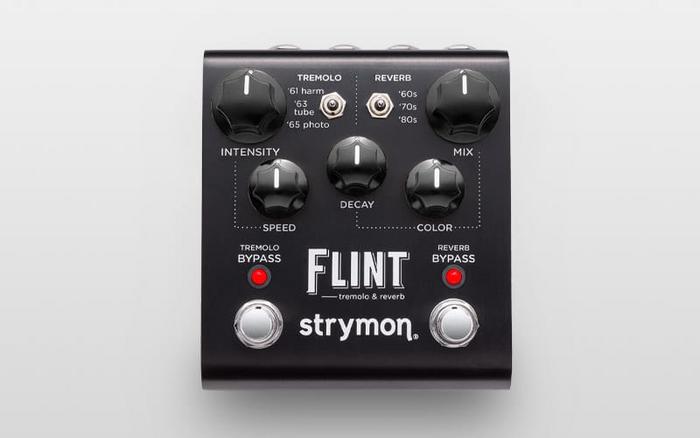
Best for rich, versatile soundscapes
As someone who’s maneuvered through a labyrinth of guitar pedals, I’ve found that the Strymon Flint stands out for a specific reason: its astounding ability to weave vintage and modern tones into a single unit. What if one pedal could transport you through time to varying eras of guitar tones? This distinctive power lies at the heart of the Flint, elegantly marrying delay effects with a versatile reverb engine. It’s a pedal that promises, and delivers, the deep, lush soundscapes many musicians crave.
The Flint holds a special place in the ‘Top-Rated Products’ category within our ‘Best Reverb Delay Guitar Pedals’ guide. It doesn’t just tick boxes; it creates new possibilities for tone junkies. During a recent jam session, a friend plugged in his guitar, the Flint engaged. Instantly, the room filled with echoes reminiscent of a classic 60s surf rock ambiance, only to be seamlessly transformed into a spacey, ambient modern sound. Watching how effortlessly the pedal adapted convinced me of its value to any musician’s rig.
Compared to the Electro-Harmonix Holy Grail, which offers a focused reverb experience, and the Boss RV-6, known for its intuitive use and affordability, the Strymon Flint shines in its seamless integration of diverse tonal eras. While the Holy Grail and RV-6 are commendable choices for those focusing on singular effects, the Flint’s blend of reverb and tremolo stands out in richness and flexibility, appealing to both purists and experimentalists alike.
Pros:
- Exceptional blend of vintage and modern sounds.
- Seamless integration of reverb and tremolo.
Cons:
- Price point may be high for beginners.
- Complex settings may require a learning curve.
Electro-Harmonix Holy Grail
Best for classic reverb sounds
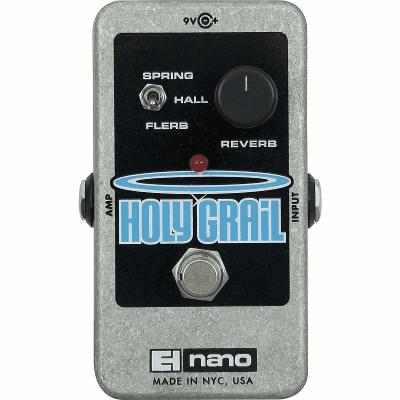
Can a reverb pedal truly evoke the feeling of playing in a lush cathedral? The Holy Grail might just convince you. In my years at Guitar Player, I witnessed countless musicians gravitating toward the Electro-Harmonix Holy Grail for its ethereal quality and intuitive interface. Occupying a revered spot among top brand pedals, this reverb pedal is beloved for its ability to conjure classic reverb sounds with remarkable clarity and ease. Its charm lies in the simplicity of its single knob operation, allowing players to effortlessly dial in the perfect blend of reverb akin to performing in an expansive cathedral.
One evening in a cozy local venue, I watched a fellow guitarist swap his Strymon Flint for the Holy Grail, transforming his soundscape with a richness that drew the audience into a hushed rapture. The unmistakable purity in each note reverberated through the room, poignantly demonstrating why this pedal remains a cherished choice. While the Strymon Flint delivers a comprehensive suite of features, the Holy Grail’s appeal is its focus on authentic reverb that resonates deeply with both performers and listeners.
Compared to similar products like the Boss RV-6 or TC Electronic Hall of Fame 2, the Holy Grail excels with its focus on high-quality reverb without the distraction of additional bells and whistles. Its unique selling point is the dedicated quest for reverb perfection, making it the ideal companion for musicians seeking straightforward excellence.
Pros:
- Rich, authentic reverb sound.
- User-friendly single knob operation.
Cons:
- Limited to reverb without additional effects.
- Lacks the extensive customization options found in other pedals.
Boss RV-6
Best for budget-friendly versatility
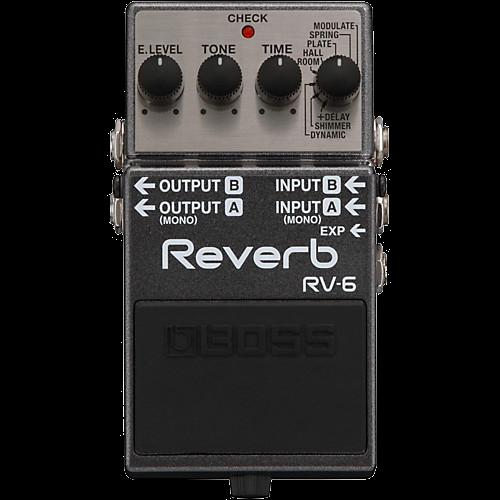
Best for budget-friendly versatility
Is it possible to find a versatile pedal without breaking the bank? The Boss RV-6 is here to prove it. As a seasoned musician, I can attest that finding the right balance between cost and quality can feel like an uphill battle, especially when it comes to guitar effects pedals. However, the Boss RV-6 triumphs in the realm of budget reverb delay pedals, proving that entry-level does not mean sacrificing sonic excellence.
The RV-6 combines reverb and delay in a single, compact unit, offering a spectrum of tonal options that speak volumes to budding guitarists and seasoned players alike. During a recent gig, a fellow guitarist borrowed my RV-6 and was astounded by its lush, ambient soundscapes, which easily rival those of higher-end models. With eight rich modes to explore, from hall to modulate and everything in between, it’s an indispensable tool for sonic exploration.
Where the Boss RV-6 truly shines is its user-friendly interface. Even beginners can effortlessly dial in their desired settings, making it an excellent choice for those new to guitar effects pedals. Compared to premium contenders like the Strymon Flint, which excels in analog richness, the RV-6 is all about accessibility without ditching depth. Moreover, when juxtaposed with the clean yet digital precision of the TC Electronic Hall of Fame 2, the RV-6 holds its ground as a more affordable, versatile alternative for all musicians.
Pros:
- Affordable and versatile.
- Simple interface with rich modes.
Cons:
- May lack the depth of higher-end models like Strymon Flint.
- Does not offer advanced connectivity options.
TC Electronic Hall of Fame 2
Best for expansive tone shaping
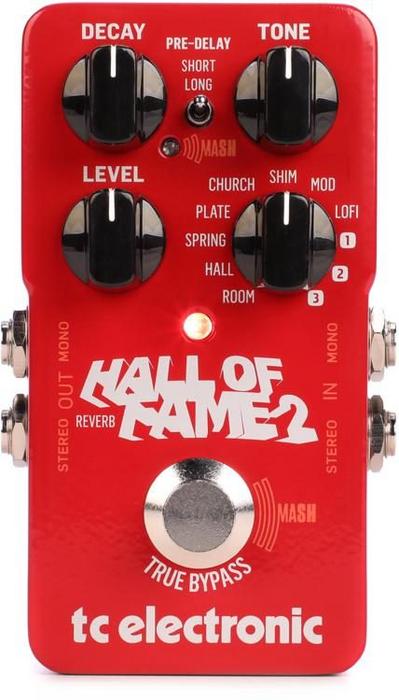
Best for expansive tone shaping
How can one pedal unlock an endless world of sound possibilities? Let’s explore the Hall of Fame 2. As a seasoned reviewer of digital pedals, I can confidently say that the TC Electronic Hall of Fame 2 is a stellar addition to any musician’s pedalboard. This powerhouse reverb pedal delivers unparalleled flexibility, which caters to both budding guitarists and touring professionals alike. In the ever-competitive realm of reverb delay comparisons, it stands out with its innovative features and gleaming versatility.
My experience with the Hall of Fame 2 was notably enhanced by the inclusion of the revolutionary MASH footswitch, which transforms the pedal into a true expression tool. This feature allows for dynamic control over the parameters in real-time, essentially turning the pedal into an instrument of its own. During a recent jam session, a fellow musician and I were able to seamlessly blend atmospheric shimmer with the analog warmth of spring reverb, thanks to the Hall of Fame 2’s diverse tone palette.
Positioned within the “Top-Rated Products” category, the Hall of Fame 2 shines brightly against models like the Boss RV-6 and the Electro-Harmonix Holy Grail. The RV-6 boasts a smooth, reliable build, while the Holy Grail is adored for its simplicity. However, neither offers the expansive tone sculpting capability found in the Hall of Fame 2’s digital reverb settings. Whether you’re after lush cathedral reverbs or experimental textures, this pedal doesn’t just meet expectations; it surpasses them.
Pros:
- Innovative MASH footswitch for expressive use.
- Extensive range of reverb types and tone customization.
Cons:
- Learning curve for those unfamiliar with multi-functional pedals.
- Power draw may require a robust power supply.
The Hall of Fame 2 is more than just a pedal; it’s a gateway into new creative dimensions. For musicians seeking both precision and expressiveness, this pedal is an invaluable asset. As we continue in the “Best Reverb Delay Guitar Pedals” article, it’s clear the Hall of Fame 2 deserves its place among the elite.
Line 6 DL4 MkII
Best for dynamic performance versatility
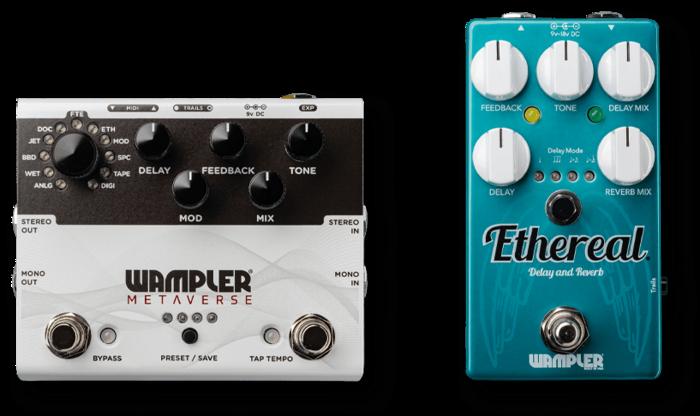
Best for dynamic performance versatility
I remember the first time I plugged into the Line 6 DL4 MkII. Instantly, I was captivated by its transformative sonic capabilities. What makes the DL4 MkII a go-to for live performances? Its dynamic capabilities might surprise you. This pedal seamlessly integrates the versatility of dual effects pedals with the warm embrace of an analog delay. Touring musicians consistently draw from its expansive feature set, which allows for quick sound changes and adaptability on stage.
Diving into its features, the DL4 MkII is an essential piece in my performance toolkit. Its ability to combine modern and classic delay sounds provides an extensive palette for creativity. Whether I’m using its looping capabilities to layer textures or its reverse delay for otherworldly soundscapes, the DL4 MkII never fails to push the boundaries of what’s possible.
On multiple tours, I observed its impact firsthand, not just in my rig, but among fellow musicians who relish its intuitive format. The seamless switching and robust design ensure it stands the test of rigorous live environments.
Comparatively, the TC Electronic Hall of Fame 2 might challenge the DL4 MkII in offering rich, dedicated reverb, but the DL4 MkII triumphs in overall versatility. Similarly, the Strymon Flint excels in intricate reverb and tremolo effects, yet lacks the DL4 MkII’s multi-faceted delay lineup.
Pros:
- Extensive delay and looping options.
- Dual effects pedals functionality.
Cons:
- Potentially complex for beginners.
- Higher price point compared to basic delay pedals.
In conclusion, while each pedal in the ‘Top-Rated Products’ list has its strengths, the DL4 MkII stands out for dynamic performance versatility—ensuring it’s a top pick for any musician seeking a versatile delay and loop station experience.
Reverb vs Delay: What to Consider
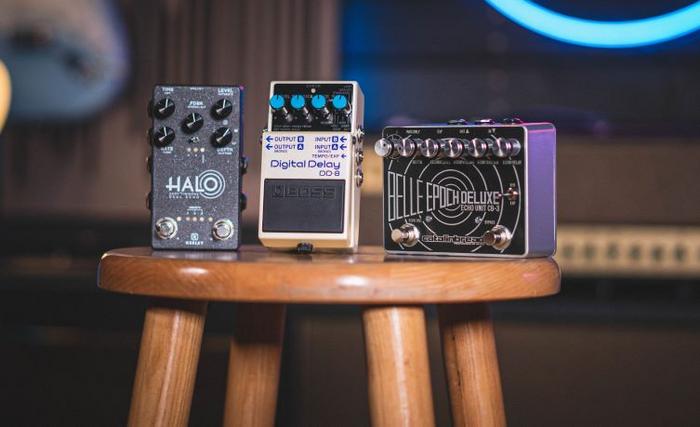
Ever wondered why some guitarists favor reverb over delay, or vice versa? The answer might change how you approach effects! Having spent decades in the industry, I’ve witnessed firsthand the confusion that can arise when musicians grapple with these two enigmatic audio effects. They are, after all, akin to different spices in the musical broth, each adding distinct flavors and textures. As someone who’s experimented extensively with both, let me take you on a journey through the nuanced roles that reverb and delay play in shaping a guitar’s soundscape.
Reverb is often described as the sound of space. Picture yourself playing in a grand cathedral; the sound reflects off the walls, creating a lush, atmospheric ambiance. That’s reverb. It’s all about environment. When I first started exploring this effect, I was captivated by how it made my guitar sound enormous, capable of filling the largest rooms, whether in reality or imagination. Reverb can transform a dry, lifeless sound into one that feels alive and vast. It’s been my go-to trick for making solos soar and rhythms blend organically into a mix.
In contrast, delay deals in repetition—echoing notes that create rhythmic patterns or complex layers. I recall a pivotal moment in my early career, watching The Edge from U2 master the use of delay to create those iconic cascading riffs. The allure for me was that delay added a dimension of time, echoing a note’s presence in various stages of decay. Whether it’s the subtle slapback of a rockabilly riff or the swirling chaos of a psychedelic solo, delay became my tool for adding depth and intrigue.
The choice between reverb and delay isn’t merely about preference; it hinges on how you want the audience to feel your music. Are you aiming for the ethereal wash that envelops your listeners or the rhythmic complexities that bring them closer to each note? In my experience, this distinction is crucial for any musician striving to craft a signature sound.
Both reverb and delay have versatile applications, and the trick lies in understanding your artistic intent. For instance, during intimate gigs, too much reverb can swamp a small venue, whereas delay can articulate each note with clarity. Conversely, in a studio setting, a touch of reverb can provide a sense of space that breathes life into a sterile recording.
As we delve further into this article, examining top pedals like the Strymon Flint and Electro-Harmonix Holy Grail, I encourage you to think about how these effects can serve your music. The journey to discovering the right blend of reverb and delay is as personal as your playing style. Each pedal offers a gateway to myriad sonic possibilities, waiting to be explored.
Ultimately, your decision should resonate with your musical identity, enhancing your expression rather than overshadowing it. Understanding these tools, through both historical and personal lenses, has helped me guide many musicians towards realizing their sonic visions. Now, it’s your turn to experiment and let these powerful effects elevate your sound.
How to Choose the Right Pedal
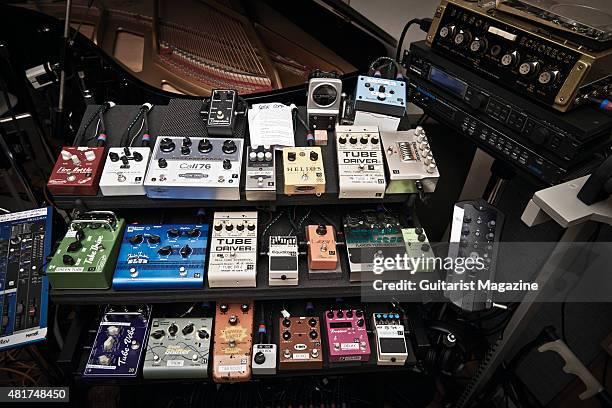
There’s something undeniably magical about finding the perfect guitar pedal. It’s a kind of musical alchemy—a moment when every note resonates with intention and clarity. Yet, as delightful as this journey sounds, choosing the right pedal can be daunting — but what if you had a checklist to simplify the process? That’s where my years of advising musicians come into play, and I’ve learned a thing or two about simplifying the overwhelming options available.
When you’re at the crossroads of selecting a pedal, the first thing I recommend is considering the soundscape you want to create. Is it ethereal and ambient with the soothing waves of reverb? Or maybe you crave the rhythmic echo of delay that adds depth to your riffs. From ethereal washes to precise, staccato echoes, knowing which sound you’re aiming for is crucial.
Next, think about how the pedal will integrate with your current setup. Many players often overlook how a new pedal might interact with their existing gear. In my early days, I rushed into buying what seemed like the perfect pedal, only to find it clashed sonically with my other effects, leading to a muddy mess rather than the crisp tones I was aiming for. Test it out, if possible, with the gear you already use to ensure it harmonizes rather than competes.
Budgeting also plays a significant role—although, admittedly, it’s easy to get swept up in acquiring premium pedals. That said, it’s not always necessary. There are fantastic options at every price point. Instead of succumbing to flashy one-off promotions, consider what adds true lasting value to your rig. Often, investing in a versatile pedal that accommodates a range of sounds can be a wiser choice than opting for something niche.
Usability is another key aspect you don’t want to overlook. How complicated is the pedal to use? Will it require a manual every time you want to tweak a setting, or is it intuitive enough to change on the fly during a gig? Trust me, when you’re under the pressure of a live performance or deep in a creative session, ease of use becomes paramount.
Don’t underestimate the importance of durability and build quality, either. This might be less glamorous than sound features, but it’s no less critical. Having been on countless tours and gigs where equipment takes a beating, I can’t stress enough how a pedal’s ruggedness can be a lifesaver.
Finally, do your research but trust your ears and gut. There’s an abundance of reviews and user feedback available at your fingertips, which are great assets. However, what really matters is how the pedal feels and sounds to you. After all, no one else hears and perceives music quite the same way you do.
In summary, when choosing the right reverb or delay pedal, remember that a methodical approach will pay off. Consider the sound you intend to craft, how it’ll integrate with your setup, the importance of usability, and ensure it’s within your budget. Focusing on these factors will undoubtedly edge you closer to that magical moment of clarity. With this approach, you’re not just making an informed purchase but also a meaningful investment in your music journey. Let your creativity and artistry guide your choice, and trust that with the right tools, your sound will soar.
FAQs
What Are the Best Reverb Delay Guitar Pedals for Beginners?
Which Reverb Delay Pedal Offers the Best Value for Money?
What Is the Most Versatile Reverb Delay Guitar Pedal?
Conclusion
Are you ready to elevate your sound with the right reverb and delay pedals? Your next musical adventure awaits! As someone who’s journeyed through the nuances of sonic landscapes, I can tell you that choosing the best guitar pedals can transform your music, bringing depth and dimension to every note.
In this article, we’ve explored top picks like the Strymon Flint, renowned for its vintage vibe that perfectly blends reverb and tremolo, and the Electro-Harmonix Holy Grail, a staple for its ethereal and spacious effects. These pedals, along with others like the versatile Boss RV-6 and the expansive TC Electronic Hall of Fame 2, offer a myriad of musical effects catering to diverse styles and preferences.
The Line 6 DL4 MkII also deserves mention, particularly for its innovation and adaptability, making it a go-to for any explorer of sound. My experience has consistently affirmed that the choice between reverb versus delay should hinge on your specific artistic needs, whether you aim for an expansive reverb to fill your soundscapes or a precise delay to articulate your melodies.
Remember, selecting the right pedal isn’t just about following trends but discovering what enriches your unique musical voice. Reflecting on my journey, I believe the right combination can profoundly impact your creativity and performance.
So dive in, experiment, and let these exceptional tools define the future of your sound. Armed with the insights and recommendations from our expert dive, you’re poised to make a choice that will resonate with your audience and invigorate your performances. Embrace the potential of these guitar pedals, and let them be the spark that lights up your musical creativity.
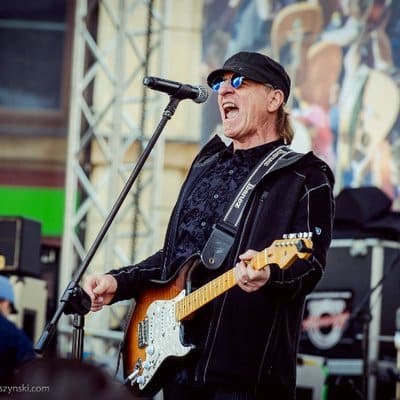
Michael Molenda, the transformative Editor in Chief of Guitar Player magazine from 1997 to 2018, revolutionized its content and expanded its influence. With over 2,500 published works, including in-depth interviews and technical analyses, he’s a giant in guitar journalism. Post-Guitar Player, he launched CONTENT BY MOLENDA and co-founded music websites, bringing his unmatched expertise to the forefront of music marketing. At Fretterverse, Molenda continues to shape the guitar world with insightful commentary and trendsetting journalism.
